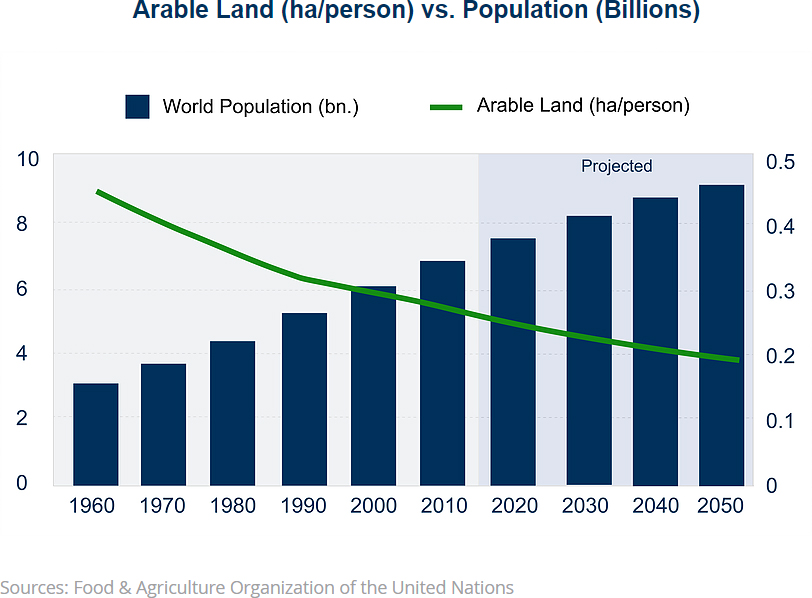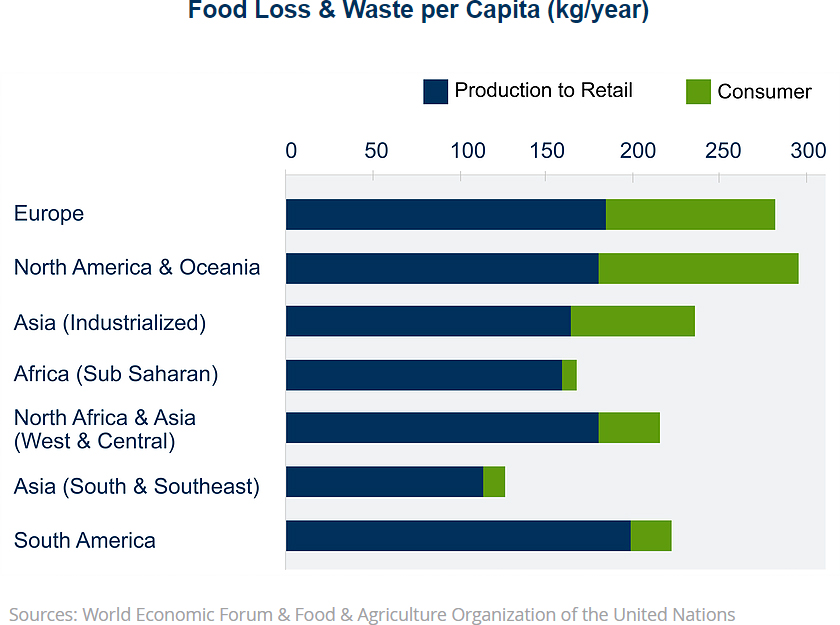Food Insecurity is an Expanding Global Epidemic
The number of people facing undernourishment and severe food insecurity is estimated to have reached 821 million – around one person out of every nine in the world – according to the Food & Agriculture Organization of the United Nations. In addition to contributing to under nutrition, food insecurity also contributes to obesity. Lack of securing healthy nutritious food has resulted in an over reliance on unhealthy processed foods. The problem of obesity is most significant in North America, but it is worrying that even Africa and Asia, which still show the lowest rates of obesity, are also experiencing an upward trend.
Food insecurity occurs due to a variety of factors which are becoming increasingly more challenging to combat. Conflict and violence in many parts of the world can lead to food insecurity as so does climate variability and exposure to more complex, frequent and intense climate extremes.
By 2050, the world’s population is expected to reach 9.6 billion and unfortunately while populations grow Earth’s surface does not. Global demand for food by 2050 will be 70% greater than it is today which requires addressing a number of key global food security challenges.
Population Growth
-
Today, about 2/3 of the world’s population lives in Asia, a figure dominated by India and China.
-
Regionally by 2100, Africa and Asia will be home to 4.4 and 4.9 billion people respectively, and together will account for 83% of the world’s population.
-
More than half of global population growth between now and 2050 will occur in Africa, which will add 1.3 billion people.
-
The United States is expected to be the fastest growing developed country, ranking 6th in total population growth. The U.S should have an additional 67 million people by 2050.
-
Rising population will place significant stress on existing resources raising the need for not only increased production but more efficient productivity based on existing resources.
Caloric Requirements
-
Not only is world population growing, but its diet is changing too. As people become more affluent they start eating more food, thereby increasing the necessity for more supply.
-
Food consumption, in terms of kcal/person per day has consistently risen throughout the world. It has increased from an average of 2,360 kcal/person per day in the mid-1960s to 2,900 currently.
-
This growth has been accompanied by significant structural change. Diets have shifted towards more livestock products (meat and dairy), cereals (coarse grains, wheat and rice) and away from staples such as roots and tubers. Tubers include potatoes, sweet potatoes and yams. Roots include carrots and turnips.
-
Fruit and vegetable consumption has significantly been increasing as well with nutritional and healthy eating experiencing a resurgence.
Changes in Weather & Arable Land
-
Earth has lost a third of arable land in past 40 years.
-
Currently, 40% of the world’s landmass is arid, and rising temperatures will turn yet more of it into desert. At current rates, the amount of food we’re growing today will feed only half of the population by 2050.
-
Water scarcity is another impending crisis. 28% of agriculture lies in water stressed regions. It takes roughly 1,500 litres of water to produce a kilogram of wheat, and about 16,000 litres to produce a kilogram of beef. In 2050, the world will need twice as much water.
-
As the world population soars, arable land per person proportionally shrinks. The stresses on food production and food prices will inevitably keep rising.
-
Arable land loss can be combated by improving productivity per acre and taking measures against climate change and erratic weather conditions.
Food Waste
-
30% of global food production is lost after harvest or wasted in shops, households and catering services.
-
This loss represents USD 750 billion worth of food every year at producer prices. At retail prices the loss reaches USD 3 trillion annually.
-
1.4 billion hectares of land the equivalent of 28% percent of the world’s agricultural area is used annually to produce food that is lost or wasted.
-
The total volume of water used each year to produce food that is lost or wasted (250km3) is equivalent to three times the volume of Lake Geneva.
-
Food wastage’s carbon footprint is estimated at 3.3 billion tonnes of CO2.
-
Developing countries suffer more food losses during agricultural production, while in middle- and high-income regions, food waste at the retail and consumer level tends to be higher.




